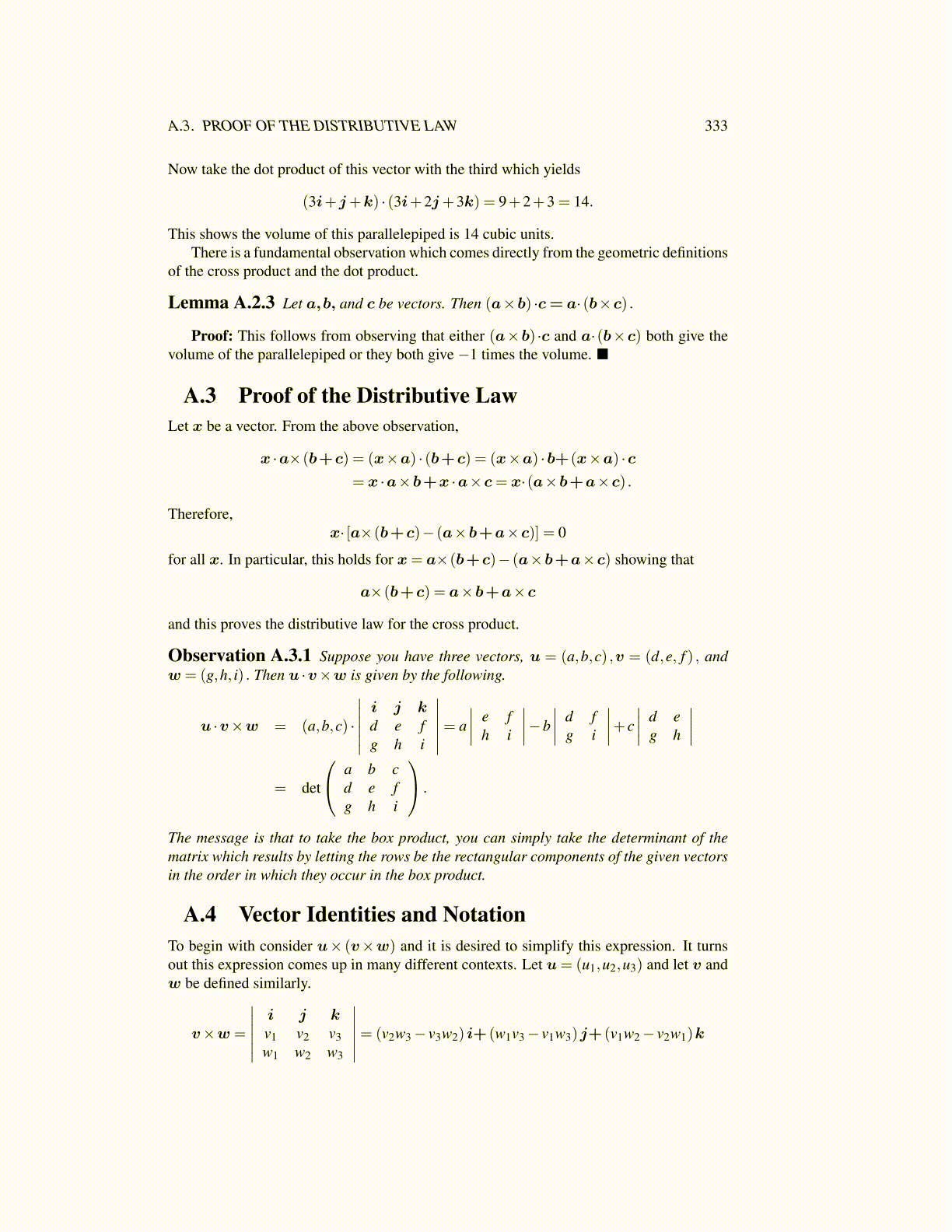
A.3. PROOF OF THE DISTRIBUTIVE LAW 333
Now take the dot product of this vector with the third which yields
(3i+j+k) · (3i+2j+3k) = 9+2+3 = 14.
This shows the volume of this parallelepiped is 14 cubic units.There is a fundamental observation which comes directly from the geometric definitions
of the cross product and the dot product.
Lemma A.2.3 Let a,b, and c be vectors. Then (a×b) ·c= a· (b×c) .
Proof: This follows from observing that either (a×b) ·c and a·(b×c) both give thevolume of the parallelepiped or they both give −1 times the volume. ■
A.3 Proof of the Distributive LawLet x be a vector. From the above observation,
x ·a×(b+c) = (x×a) · (b+c) = (x×a) ·b+(x×a) ·c= x ·a×b+x ·a×c= x·(a×b+a×c) .
Therefore,x· [a×(b+c)− (a×b+a×c)] = 0
for all x. In particular, this holds for x= a×(b+c)− (a×b+a×c) showing that
a×(b+c) = a×b+a×c
and this proves the distributive law for the cross product.
Observation A.3.1 Suppose you have three vectors, u = (a,b,c) ,v = (d,e, f ) , andw = (g,h, i) . Then u ·v×w is given by the following.
u ·v×w = (a,b,c) ·
∣∣∣∣∣∣i j kd e fg h i
∣∣∣∣∣∣= a∣∣∣∣ e f
h i
∣∣∣∣−b∣∣∣∣ d f
g i
∣∣∣∣+ c∣∣∣∣ d e
g h
∣∣∣∣= det
a b cd e fg h i
.
The message is that to take the box product, you can simply take the determinant of thematrix which results by letting the rows be the rectangular components of the given vectorsin the order in which they occur in the box product.
A.4 Vector Identities and NotationTo begin with consider u× (v×w) and it is desired to simplify this expression. It turnsout this expression comes up in many different contexts. Let u= (u1,u2,u3) and let v andw be defined similarly.
v×w =
∣∣∣∣∣∣i j kv1 v2 v3w1 w2 w3
∣∣∣∣∣∣= (v2w3− v3w2) i+ (w1v3− v1w3)j+ (v1w2− v2w1)k